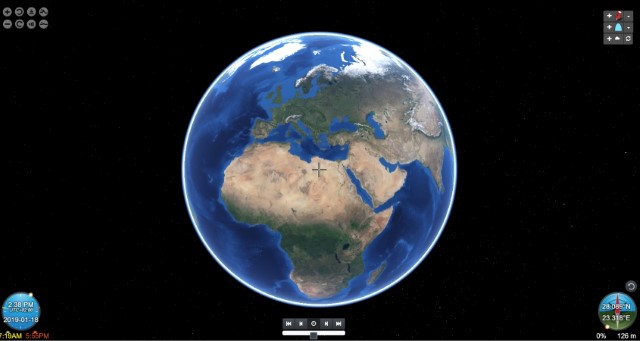


The National Aeronautics and Space Administration (NASA) was born in 1958 with a motto: “For the Benefit of All”. With this contribution, we want to increase awareness of NASA World Wind as a unique opportunity to foster collaboration between scientists, developers and other stakeholders, enriching knowledge of our Earth’s complexity. The European Space Agency is now partnering with NASA on development of the "ESA-NASA Web World Wind" this high degree of interest from other agencies will boost future project productivity. We give here an overview of the project, reporting details regarding current development direction, with state of the art examples. NASA World Wind provides the ideal environment for scientific data, their analysis, visual representation and interaction with users, in a single platform, which can be deployed both as a Java desktop application (NASA World Wind) or a JavaScript web application (ESA-NASA Web World Wind). Geological Survey.NASA World Wind is an open source application-programming interface for developing geographic information systems based on a virtual globe rendering engine representing a planet. NASA Earth Observatory image by Wanmei Liang, using Landsat data from the U.S. This October, Windpark Fryslân will host the Windmill Cup, a sailing race that navigates through the turbines. Although the island only covers 2 hectares (5 acres), it is surrounded by 25 hectares (60 acres) of shallow water serving as a fish habitat.Īlongside this new power source and wildlife habitat, the Dutch have discovered fresh recreational activities associated with the wind project. Ecological Impact and Recreational OpportunitiesĪdjacent to one of the dike’s locksets at Kornwerderzand, an artificial island initially created for use as a construction platform now functions as a nature reserve and bird sanctuary.
#NASA WORLD WIND WINDOWS#
Furthermore, the installation of 130-meter (430 feet) diameter rotors required finding windows of relatively calm conditions amidst the area’s natural windiness. The vessels had to both fit through the locks in the dike and operate in the shallow waters of the lake. A major constraint was the size of ships that could be used to transport construction materials and turbine components to the site. In the subsequent year, 2022, the installation generated 1.236 terawatt-hours of electricity.īuilding Windpark Fryslân in Lake IJssel presented unique difficulties, as acknowledged by Van Oord, part of the consortium responsible for the construction. This production translates to about 1.2 percent of the total electricity consumption in the Netherlands or enough to energize around 500,000 households. The wind farm started its operation in the fall of 2021, with an annual capacity to generate 1.5 terawatt-hours. The 32-kilometer-long (20-mile-long) Afsluitdijk, which provides flood protection and separates the lake from the Wadden Sea, is also prominent in the image. Their arrangement in a hexagon shape is intended to minimize how much the installation obstructs the view of the horizon. In the image above, acquired by Landsat 8’s Operational Land Imager (OLI) on July 8, 2023, Windpark Fryslân’s precisely spaced turbines are seen rising out of Lake IJssel. Comprising 89 wind turbines, Windpark Fryslân is the largest freshwater wind farm globally, and its unique hexagonal arrangement is a testament to Dutch ingenuity. With a history rooted in wind power, it is perhaps unsurprising that the Dutch have created this modern, world-class facility. Windpark Fryslân, a leading-edge wind energy installation in the Netherlands, is capable of producing sufficient electricity to power approximately half a million homes. Windpark Fryslân can produce enough electricity to power about half a million homes in the Netherlands. (Satellite image of Windpark Fryslân captured on July 8, 2023, by the Operational Land Imager (OLI) on Landsat 8.) Despite its construction challenges, the project has brought ecological benefits and introduced new recreational opportunities like the Windmill Cup sailing race. Windpark Fryslân, the world’s largest freshwater wind farm in the Netherlands, powers 500,000 homes and contributes 1.2 percent to the national electricity consumption.


 0 kommentar(er)
0 kommentar(er)
